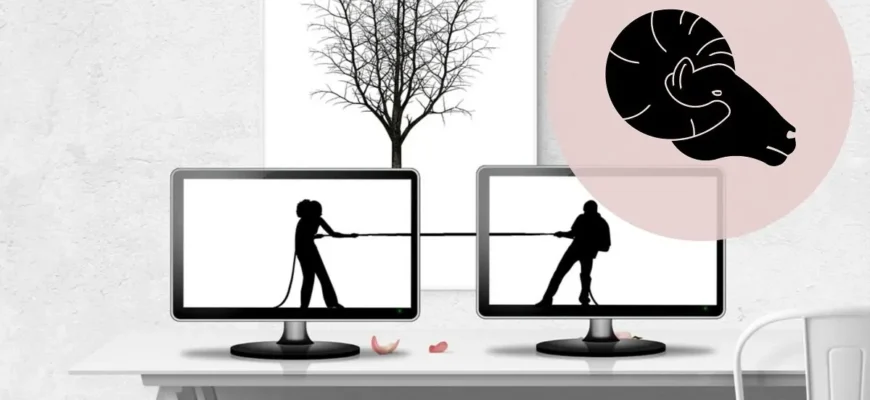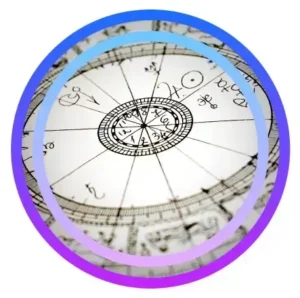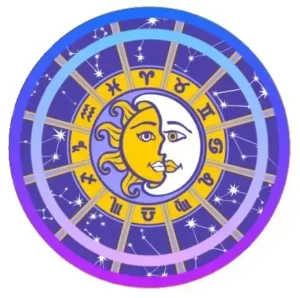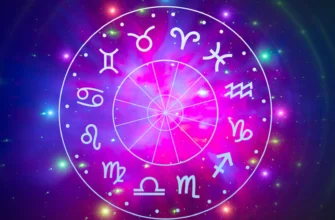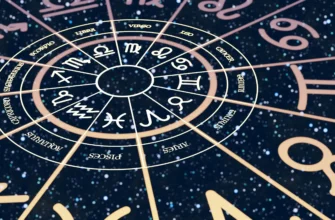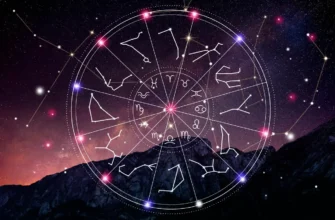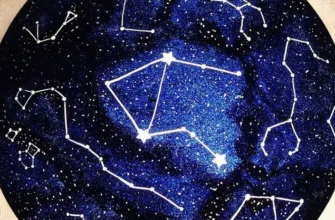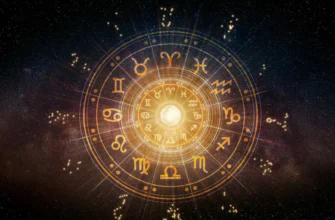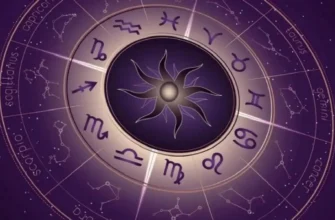A comparison chart in astrology offers one of the clearest windows into how two people function together emotionally, mentally, and practically. While a natal chart reveals personal tendencies, a comparison chart—built through relationship synastry—shows how those tendencies interact, clash, or harmonize. In synastry chart interpretation, astrologers analyze emotional responsiveness, communication habits, conflict resolution styles, and what each partner unconsciously expects from love. This becomes especially important for understanding where compatibility feels effortless and where relationship skills need development. Through synastry chart analysis, we see whether partners support each other’s growth or trigger insecurities rooted in deeper emotional patterns.
A comparison chart also highlights long-term partnership potential, revealing how shared values, intimacy needs, and attachment styles align or diverge. In love compatibility astrology, this approach goes beyond “good or bad match” labels and instead explains how two individuals can consciously build a healthier, more resilient relationship. By studying these energetic exchanges, couples gain clarity about their strongest strengths—and the emotional blind spots that require patience, empathy, and honest communication.
In astrology, the comparison chart – or synastry chart – reveals how two people interact emotionally, mentally, and spiritually. Using refined comparison techniques, astrologers examine key personality indicators such as the Sun, Moon, Venus, and Mars to uncover patterns of compatibility and potential challenges. These insights form the basis of personal relationship-building skills, helping individuals understand their partners more deeply and improve emotional communication. By exploring objective similarities and differences in each person’s birth chart, one can identify what fosters harmony and what may lead to tension. This practice lies at the heart of relationship astrology, offering a clear guide to creating balanced, authentic, and emotionally fulfilling connections.
Personal Relationship-Building Skills
Astrology offers a profound framework for understanding how two individuals connect, complement, or challenge each other on emotional and spiritual levels. Developing personal relationship-building skills through the chart comparison process begins with a holistic study of each horoscope – analyzing core needs, desires, and behavioral tendencies. This exploration reveals patterns of affinity and repulsion, mapping out the energetic coordination between two people. Through the constellations, house placements, and close aspects, astrologers identify which vibrational frequencies and qualities give tone and color to personal planets.
To understand one’s capacity for intimacy, special attention is given to the seventh house – the domain of partnership – and to the Sun’s aspects (especially for women) and the Moon’s aspects (especially for men). The sign and position of Venus further describe what qualities a person seeks in love, friendship, and marriage.
A deeper layer of analysis involves emotional and sexual orientation, revealed through Mars, Venus, and the Moon. Their aspects and elemental balance define how passion and affection are expressed. The fifth house (love), eighth house (intimacy), eleventh house (friendship), and first house (identity) complete the picture, each highlighting a different dimension of human connection.
Astrologers also examine current transits and progressions, which often mirror evolving personal needs or new expressions of love and self-awareness. Finally, signs of shared experience – tight inter-aspects within a 2° orb – are crucial. These synchronized planetary interactions reveal moments of deep resonance, when two life paths align and the potential for mutual growth and understanding reaches its most transformative point.
Skills in Comparing Horoscopes
The art of comparing two natal charts – known as synastry – reveals the invisible threads that bind two people together. It helps uncover how their energies interact, where harmony naturally flows, and where friction may arise.
The first step is to examine any tight cross-aspects between the two charts – those within a 4° orb. These connections show how two people’s energy fields merge and nourish each other. Each close interaction represents an energetic bridge: points where personal experiences intertwine and emotional responses mirror or challenge one another.
Next, astrologers analyze the broader pattern of cross-aspects to evaluate the overall energetic harmony between the partners. The interplay between the Sun and Moon, Mercury and Mercury, Venus and Venus, Mars and Mars, Venus and Mars, Venus and the Moon, and the Sun and Mars defines the emotional, intellectual, and physical tone of the relationship.
Any tight cross-aspect involving a personal planet – or the Ascendant/Descendant axis – is especially critical, as it shapes the immediate chemistry and long-term potential of the bond. When one partner’s Ascendant, Descendant, or 1st/7th house ruler aligns with a planet in the other’s chart, the connection leaves a profound imprint. Over time, this influence evolves, manifesting through different stages of shared growth and transformation.
To refine the analysis, each person’s planets are placed in the other’s chart by zodiac degree. This method shows which houses are activated – revealing where one partner impacts the other’s life. The houses of the Sun, Moon, and Ascendant, along with their rulers, are particularly telling. Outer planets such as Saturn, Uranus, Neptune, and Pluto play subtler roles unless they form close conjunctions with personal points or there is a notable age difference between the two individuals.
Recurring cross-aspects create a pattern of double resonance, where energies echo back and forth in a mutual exchange. For instance, if Person A’s Moon is conjunct Person B’s Jupiter and Person B’s Moon trines Person A’s Jupiter, a lasting emotional rhythm forms – often described as karmic harmony.
When one planet forms multiple similar aspects – for example, several harmonious links to Jupiter – its energy colors the entire relationship, setting an emotional or philosophical tone that permeates all interactions.
Finally, after reviewing all key factors, the astrologer synthesizes the findings:
Which impressions dominate? Is there balance between passion and stability? Do partners complement or overcompensate for one another’s traits? Can differences be harmonized and even cherished? Ultimately, the goal is to understand how these celestial interactions reflect shared goals, ideals, and the spiritual essence of partnership itself.
Objective Similarities and Differences in Key Personality Indicators
Even after exploring each person’s emotional needs and relationship habits, it’s essential to step back and consider a broader question: how similar – or different – are these two people at the core of their personalities?
One of the simplest yet most revealing exercises in synastry is to assess the overlap of zodiac signs in each partner’s birth chart. Start by listing the signs of the Ascendant, Descendant, Sun, Moon, Mercury, Venus, Mars, Jupiter, Saturn, and the Lunar Nodes for both individuals. Then, compare the two lists side by side. Each shared sign counts as a match; signs that do not appear in both charts remain unmatched.
The ratio between matches and non-matches offers a surprisingly clear snapshot of basic astrological compatibility. If the majority of signs align, the two individuals tend to share a similar rhythm of perception, expression, and motivation. A high number of mismatched signs, on the other hand, often signals contrasting temperaments and a potential for misunderstanding – especially in emotional or mental communication.
Yet, differences aren’t always a disadvantage. Opposite signs on the zodiac wheel – like Aries and Libra, or Taurus and Scorpio – can create a powerful dynamic of attraction and complementarity. They represent two halves of the same principle, mirroring and balancing one another.
To deepen this analysis, repeat the exercise focusing only on the core personality factors: the Sun, Moon, Ascendant, Mercury, Venus, and Mars. Removing Jupiter, Saturn, and the Nodes sharpens the view of the individuals’ essential chemistry. What remains is an objective picture of how well two distinct personalities resonate – or clash – at the most intimate level.
Elemental and Constitutional Balance
One of the most revealing steps in chart comparison is examining the elemental and constitutional balance of each person’s horoscope. This analysis explores the underlying temperament – how each individual’s energy flows and interacts through the four elements and three modalities.
Elemental balance reflects the distribution of the classical elements – Fire, Earth, Air, and Water – within the chart. Fire symbolizes vitality and enthusiasm, Earth stands for practicality and stability, Air represents intellect and communication, and Water signifies emotion and sensitivity.
Constitutional balance, on the other hand, measures the dominance of the Cardinal, Fixed, and Mutable qualities, revealing how a person initiates, maintains, or adapts to life’s circumstances. Cardinal energy propels action, Fixed energy provides endurance, and Mutable energy brings flexibility and change.
To calculate this balance, each chart factor is given a specific weight based on its astrological importance. For example, the Sun and Moon carry the greatest significance, followed by the Ascendant, Descendant, and Midheaven, while the outer planets and asteroids contribute subtler tones. The method assigns numerical values to both the sign and the house position of each planet. For instance, a planet in a Fire sign such as Leo or Aries, or placed in a Fire house (the 1st, 5th, or 9th), reinforces the Fire element; similarly, a planet in Cancer or the 4th house strengthens Water energy.
The same principle applies to modalities. A planet in a Cardinal sign (Aries, Cancer, Libra, Capricorn) or in the 1st, 4th, 7th, or 10th house increases Cardinal strength. Those in Fixed signs or the 2nd, 5th, 8th, and 11th houses add stability and persistence, while Mutable placements – Gemini, Virgo, Sagittarius, Pisces, or the 3rd, 6th, 9th, and 12th houses – enhance adaptability.
Once all planetary and house values are tallied, each individual’s elemental and constitutional profile becomes clear. Comparing these profiles across charts reveals whether the two people share similar temperaments – or if their natural rhythms differ sharply.
If one chart, for example, overflows with Fire while the other is dominated by Earth, the relationship may oscillate between enthusiasm and caution. An Air–Water contrast, meanwhile, might blend thought with feeling – or lead to emotional miscommunication. Such differences, however, are not inherently negative. They can create dynamic balance, where one person’s strengths fill the other’s gaps, and together, they form a more complete whole than either could alone.
Composite Chart – The Chemistry of Two Souls
In the second part of our exploration, we turn from individual psychology to the astrological chemistry that binds two people together. These are known as composite factors – the dynamic interconnections between birth charts that shape how two individuals experience each other. Unlike the objective traits and personal needs revealed in natal charts, composite factors describe the field of energy that emerges when two lives intertwine. They reveal not who we are separately, but who we become together.
In astrology, the composite chart represents the relationship itself as a living entity – its emotional tone, rhythm, and purpose. Each planet and point in this shared chart speaks to how the pair functions as a unit: how they love, communicate, dream, and face challenges.
Yet, it’s important to remember that these composite influences are rarely experienced equally by both partners. What feels like deep emotional resonance to one may seem overwhelming or barely noticeable to the other. Each person’s planets respond differently to the other’s chart – one may feel profoundly moved, while the other experiences only subtle tension or inspiration.
This asymmetry is at the heart of synastry and composite interpretation. A harmonious aspect for one person might create emotional dependence, while the same connection may awaken independence or even discomfort in the other. In this sense, every relationship becomes a mirror of evolving consciousness – each partner reflecting and reshaping the other’s growth through an ongoing dance of attraction, projection, and transformation.
Ultimately, the composite chart reveals the subjective bond – the energetic atmosphere that defines how two people experience love, trust, conflict, and spiritual purpose together. It is not about compatibility alone, but about the alchemy of souls – the shared vibration that either deepens their connection or challenges them to evolve beyond it.
Connecting the Birth Charts of Two People – House Superposition
One of the most revealing techniques in relationship astrology is the study of house superposition, which shows how one person’s planets activate the different life areas of another. To begin, list the signs and degrees of all twelve house cusps in the first person’s natal chart. Then note the positions of the second person’s luminaries (Sun and Moon), planets, and lunar nodes, and place them within the first person’s houses according to their zodiac sign and degree. If a planet falls within three degrees of the next cusp, it is often considered active in that next house.
Repeat this process for the second person – placing the first person’s chart factors into their houses. This creates a complete picture of mutual overlay, revealing twenty-four dynamic points of interaction: twelve from each perspective.
Each planet that falls into a partner’s house describes the area of life it energizes or challenges. As astrologer E.W. Neville once said, such planets seem to be “captured” by the other person’s house – expressing their energy through that field of experience.
In this framework, the Moon and Venus houses are especially important in emotional and romantic relationships, showing how affection, comfort, and attraction flow. The Sun’s house reveals how one partner’s identity and confidence are expressed through the relationship, while Mercury’s house indicates communication style and intellectual rapport. Mars’ house highlights where desire and drive are directed.
When a partner’s Sun, Moon, Venus, or Jupiter falls in the fifth or seventh house, it often signals a natural affinity for love, romance, or partnership. Conversely, a partner’s planet in the eighth house can awaken intense emotions and deep physical magnetism, often blending passion with transformation.
Saturn’s influence in house overlays depends on its placement – it may create structure, loyalty, and responsibility when well-aspected, but can also impose emotional restraint or fear. In intimate charts, Saturn tends to work best in the 2nd, 4th, 6th, or 10th houses, where its discipline and maturity can be channeled productively, rather than restricting the warmth of personal connection.
In the end, house superposition offers one of the clearest lenses into how two lives intertwine – revealing which areas of life become shared ground, where tension or fascination arises, and how both individuals grow through the energetic resonance of their bond.

